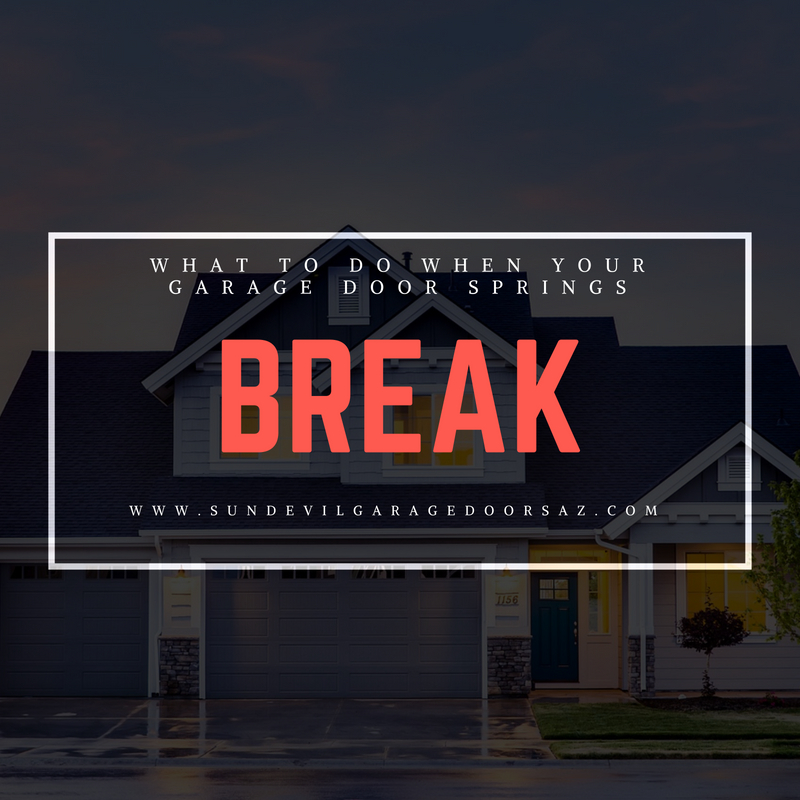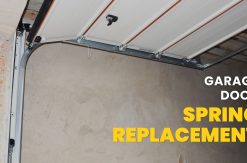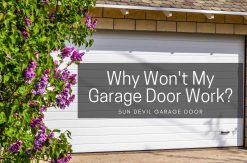Don’t let their modest size fool you, garage door springs work to balance the entire weight of the heavy door as it lifts and lowers, whether manually or with an automatic garage door opener. As such, they under tremendous tension, which can make repairing them dangerous. Here is everything you need to know about garage door spring types and what you should do when they break.
Garage Door Spring Types
There are two types of garage door springs: torsion and extension:
Torsion Springs: Mounted above the garage door opening, torsion springs are coupled with a drum and a cable, which run the length of the door to the bottom brackets. Whenever the opener is activated, the spring slowly twists and coils (tensing), providing force to raise the door. Tension is released as the door closes. Standard torsion springs are rated from 15,000 to 20,000 cycles.
Extension Springs: Mounted on both sides of the garage door – on the vertical tracks – extension springs expands and contracts as the door opens and closes. All extension springs should be paired with safety cables, which are attached to the spring on one side of the track, and the track supports on the other along with a system of pulleys. Standard extension springs are rated for 10,000 cycles.
Based on Usage
Garage door springs have a limited lifespan which is measured in cycles. One cycle is completed each time the door opens and closes. Standard springs, commonly measured for 10,000-cycles should give you a lifespan of approximately seven years. This is based on four cycles a day. Obviously, the more the door is used, the sooner this crucial component will break, necessitating replacement.
It is also possible for both torsion and extension springs to break for other reasons such as rust, damage, and extreme weather fluctuations. Because no two households are the same, high-cycle springs, measured for 20,000; 30,000; or even 50,000 cycles are also available. These springs are often a wise investment for two plus-driver households.
Don’t Try This at Home
Garage door springs are under a tremendous amount of tension. Once they break, the door cannot operate safety, and should not be used until repairs have been made. Complete replacement is the only repair option available for broken garage door springs. It is often recommended that both springs be replaced during the same visit as they were likely installed at the same time, and are therefore, on the same life cycle.
Attempting to replace them yourself can result in irreparable damage to the door or opener. You also risking your own personal safety. This is a job best left to a local garage door repair professional. Professionals have the experience and equipment (specialized tools are required) to do it safety and efficiently. Many service companies provide same day or 24-hour emergency repair for broken springs. Until repairs are made, disconnect the opener from its power source, so that no one attempts to use it.




